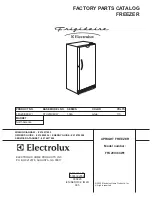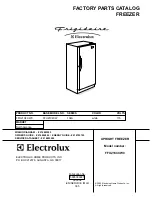
- 2 -
•
There is a gravity drain line and the unit shall be installed level or with a
slight angle toward the drain connection. If rise-up is needed, a
condensation pump must be used.
4. Air Sensor
•
The air sensor can be located in the wine room 5 feet above the floor or
the return air area, but not the supply air area or air dead area.
•
If the temperature controller is mounted outside the wine room but the air
sensor is located inside the wine room, use 18 gauge wires to extend the
air sensor if needed.
5. Refrigeration Piping, Evacuating, Charging and Starting
CAUTION:
•
ALWAYS USE THE SUPERHEAT AND SUBCOOLING, PRESSURE
READINGS TO CHARGE REFRIGERANT PROPERLY, THE LISTED
CHARGES ARE FOR REFERENCE ONLY.
•
CHARGE 15% MORE REFRIGERANT IN THE SUMMER IF THE UNIT IS
EQUIPPED WITH A LOW AMBIENT CONDITION KIT.
•
The installation order starts from condensing unit (including the receiver,
discharge valve), liquid line filter-drier, moisture-liquid indicator/sight glass,
liquid line, to evaporator unit (including liquid line connection, solenoid
valve, expansion valve, and suction line connection), returning to insulated
suction line, suction valve and then condensing unit.
•
Use inverted siphons to prevent liquid from flooding back to the
compressor and aid oil returning to the compressor.
•
Charge the system after pipe brazing, leak testing and evacuating.
•
The subcooling at the condensing unit shall be around 10
°
F. The charge
may be complete when there are no more bubbles forming in the sight
glass.
•
The evaporator’s constant pressure expansion valve is set around 35-
40
°
F at factory. This pressure setting gives a dew point to maintain the
humidity for storing wine.
•
The superheat at the evaporator unit shall be around 9-18
°
F under low -
high load at 75
°
F ambient temperature.
•
If the superheat is high, check the subcooling first to know
if the refrigerant charge is sufficient. If the charge is not
sufficient, add more refrigerant. If the charge is good, then
increase the evaporator suction pressure by turning the
hex nut (5/16”) clockwise.
•
If the superheat is low, then decrease the evaporator
suction pressure by turning the hex nut (5/16”) counter-
clockwise.

























